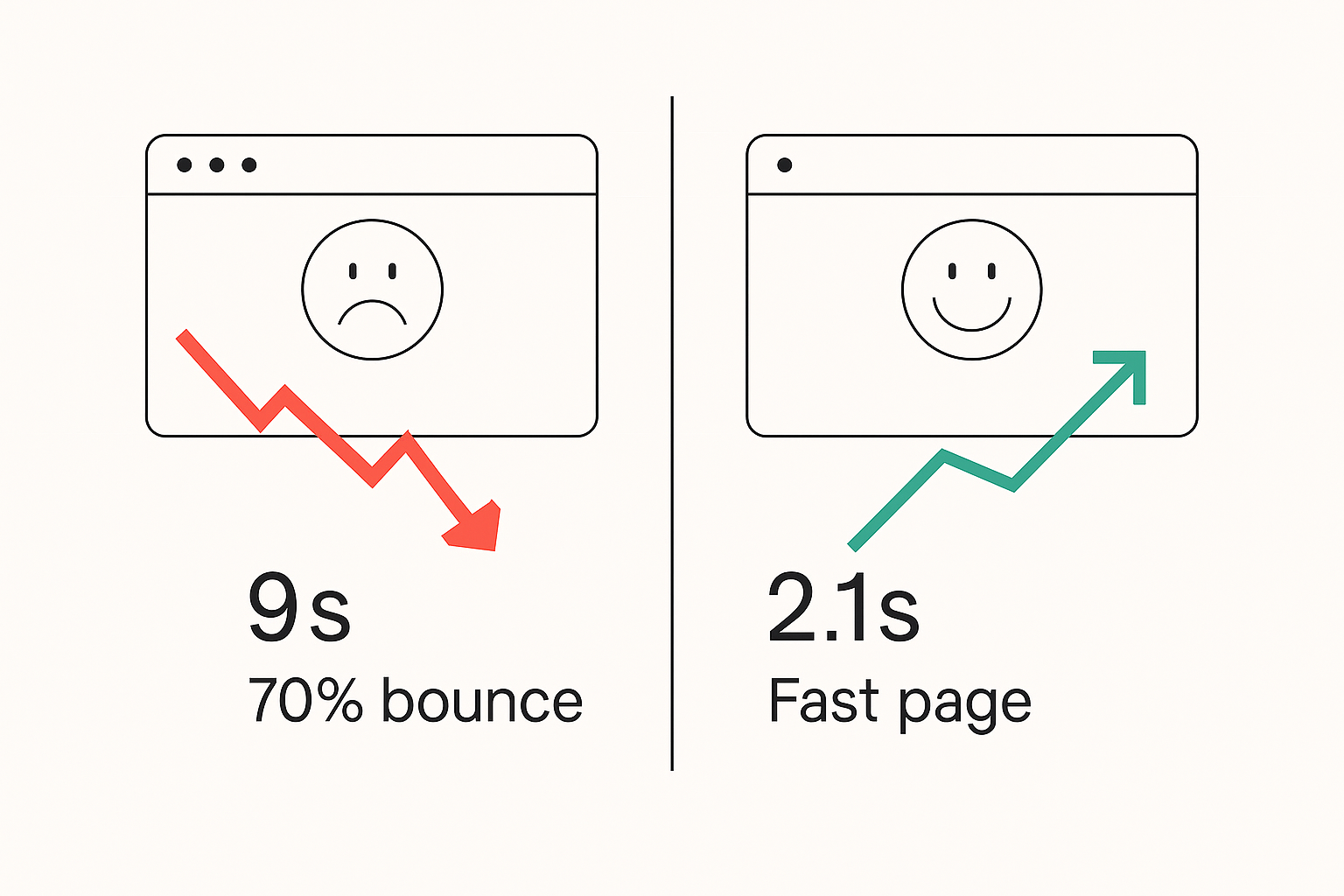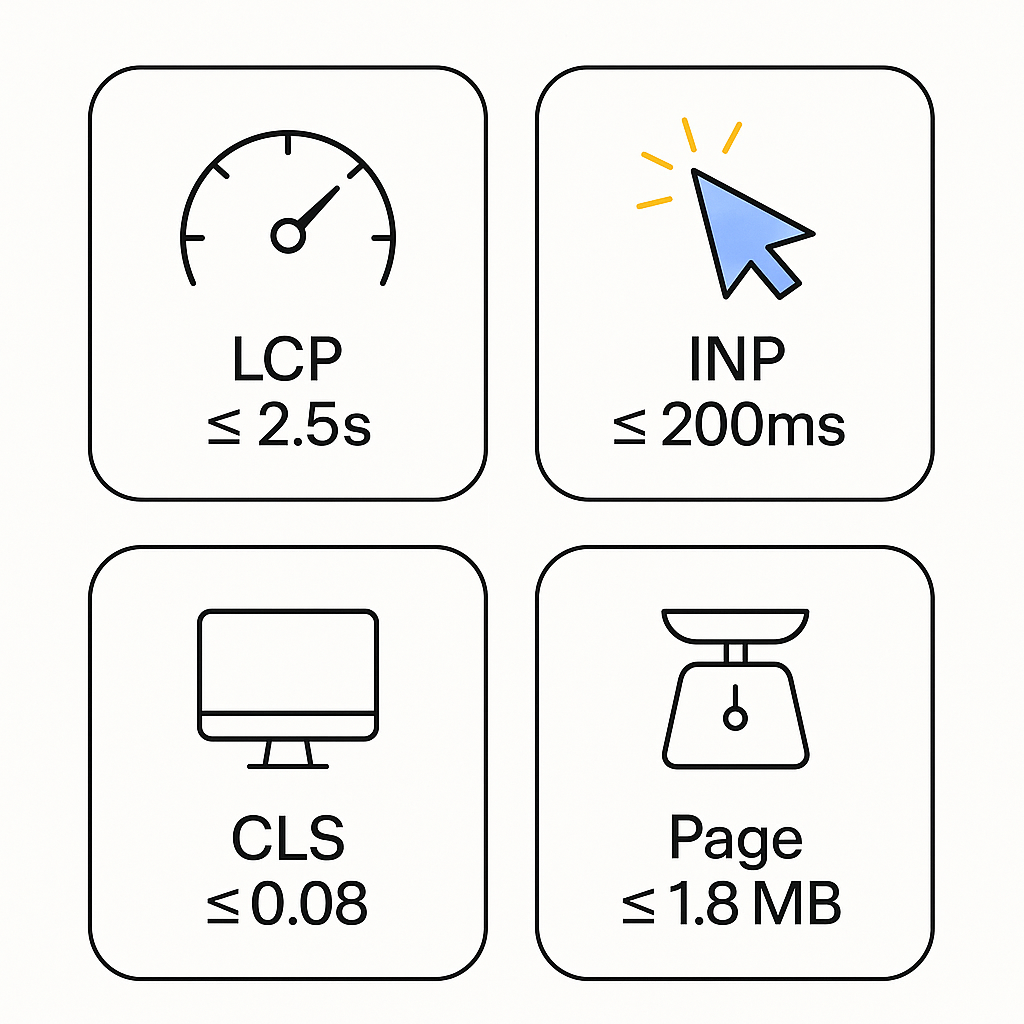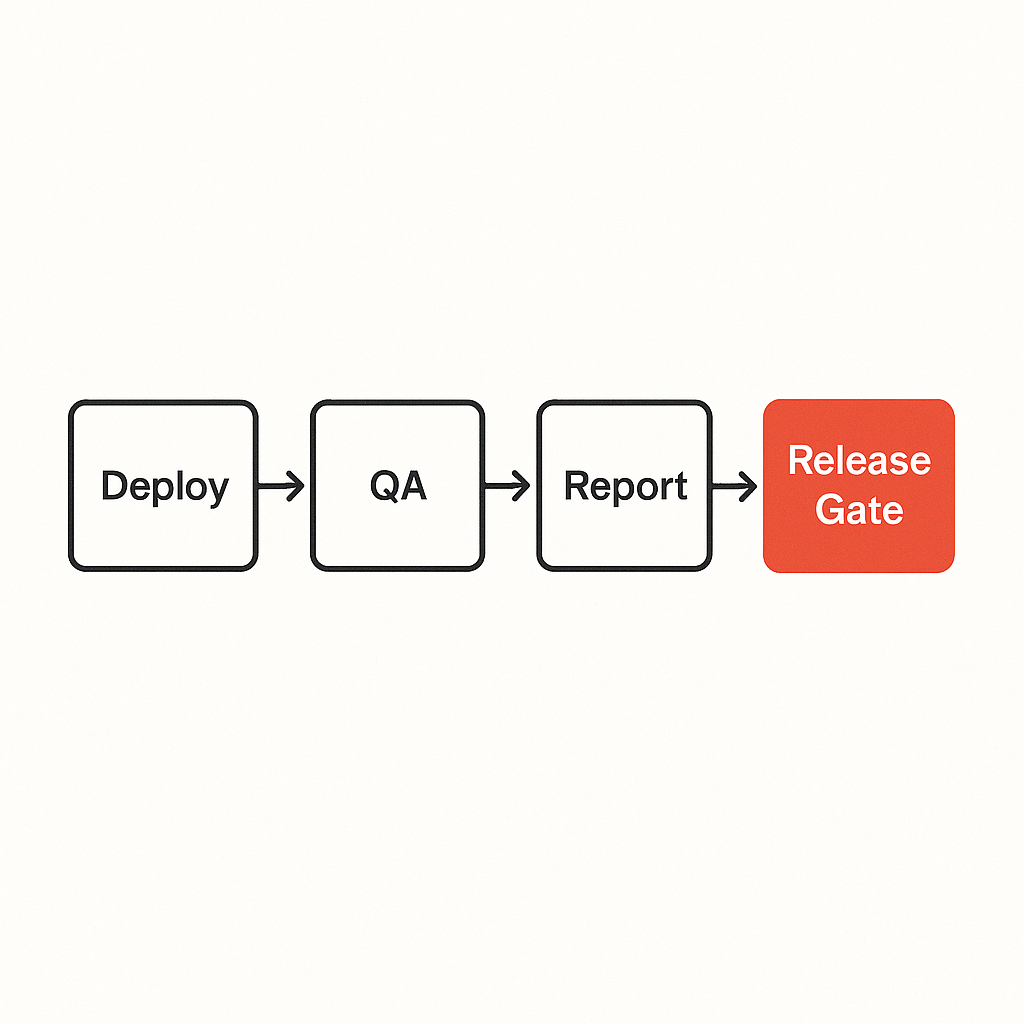The campaign was live. Ads were running. Thousands of visitors hit the landing page in the first hour.
And then — checkout froze. No purchases went through. In three hours, over $120,000 in revenue vanished. Not because the product was wrong. Not because the audience didn’t care. But because the site was pushed live without a gate.
Headless and No-Code platforms like Webflow, Shopify Headless, and Framer give teams incredible speed. Publish is instant. But speed without control is dangerous.
This is why we define a release-gate standard: a set of hard, measurable rules that decide whether something is ready for customers — or not.
What a Release Gate Really Is
Think of it as a checkpoint before publish:
- Metrics are tested automatically.
- If they pass, the release goes live.
- If they fail, the release is blocked.
- Exceptions are rare, written down, and time-limited.
No guesswork. No “we’ll fix it later.” The gate enforces discipline: quality or rollback.
Why These Platforms Need It
Traditional engineering pipelines have layers of safety: code reviews, CI, staging, QA. In No-Code and Headless, publishing is often just a button click. That’s where mistakes slip through.
The biggest risks:
- Pages that break after loading — fine at first glance, but buttons stop working after a second.
- Layout shifts — you try to click “Buy now,” the page jumps, and you hit something else.
- Slow pages — a 9-second load on 4G turns ad spend into wasted spend.
- Broken commerce flows — customers pay for items out of stock, refunds pile up.
- Privacy violations — analytics capture personal data before consent.
Each of these doesn’t just hurt users. They burn money, brand trust, and campaign ROI.

The QA Pass
Every release, no matter how small, runs through the same path:
- Deploy to staging — isolated, with indexing disabled.
- Key flows tested — API responses, checkout, login.
- Critical interactions checked — with cache off (cold) and cache on (warm).
- Accessibility — automated tests plus a simple keyboard walk-through.
- Performance — tested under 4G on real low-end and mid-range devices.
- Visual consistency — breakpoints and themes compared against the design.
- Content sanity — sitemap works, no broken links, media loads.
- Analytics & privacy — no personal data before consent.
- One report — HTML/PDF with all results.
- Gate decision — automatic publish or automatic block.
One run. One report. One outcome.
The Hard Stops
If any of these thresholds fail, the release does not go live:
- Load speed: main content appears in under 2.5 seconds.
- Interaction: clicks and taps respond within 200ms.
- Page stability: no unexpected jumps while scrolling or clicking.
- Page weight: no more than 1.8 MB total, 350 KB of scripts, 800 KB of images.
- Accessibility: no critical violations, readable contrast, keyboard focus intact.
- Visual changes: design differences smaller than 0.1%.
- Commerce flows: stock, pricing, and taxes must all work correctly.
- Privacy: analytics silent until consent is given.
These aren’t guidelines. They’re gates.

What It Looks Like in Real Life
Case 1 — Webflow landing page
A marketing team launched a new product site.
| Without a gate | With a gate |
|---|---|
| 4.2 MB page weight, 9-second load time on 3G, bounce rate at 70%. Ad budget of $50,000 wasted in a week. | Release blocked, assets compressed, scripts trimmed, load time down to 2.1 seconds. Bounce rate drops to 35%, conversions double. |
Case 2 — Shopify holiday sale
Case 2 — Shopify holiday sale
A store launched new discounts during Black Friday.
| Without a gate | With a gate |
|---|---|
| Out-of-stock items still purchasable, discounts misapplied in checkout, refund wave cost the company $40,000 and hundreds of angry support tickets. | Scenarios flagged in staging, release blocked. Issues fixed before going live. The sale ran smoothly, with record revenue. |
Release gates don’t slow teams down. They stop teams from losing what they’ve already earned.

Why It Matters
Release gates protect:
- Brand trust — customers don’t forgive broken checkouts.
- Marketing ROI — every wasted second eats ad spend.
- Search ranking — Google now measures speed and stability directly.
- Legal risk — privacy compliance is non-negotiable.
But beyond protecting, gates create confidence: every release is backed by data, not hope.
Beyond Metrics: Building Culture
At its core, the release-gate standard isn’t just about numbers. It’s about culture.
It says:
- Our team values responsibility as much as speed.
- Designers, developers, and QA speak the same language of thresholds.
- Releasing is no longer gambling — it’s a statement of evidence.
This culture pays off: no frantic firefighting, no wasted campaigns, no silent brand damage. Just sustainable velocity and trust between teams, leadership, and customers.
Conclusion
Headless and No-Code make publishing fast. But fast without quality is reckless.
The release-gate standard makes fast safe. It transforms fragile speed into sustainable momentum. With clear thresholds, automatic gates, and shared accountability, teams can ship quickly — and ship well.
Because in the end, release gates aren’t only about protecting a launch. They’re about building a culture where speed and quality move together.
Oct 22, 2025
